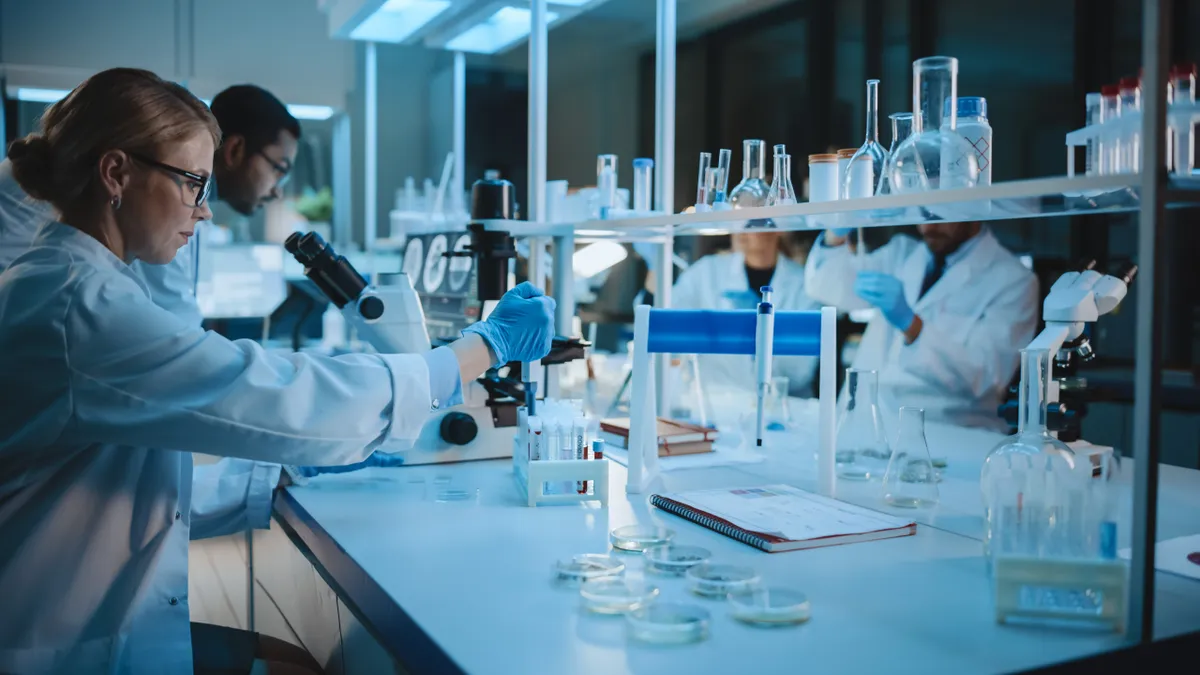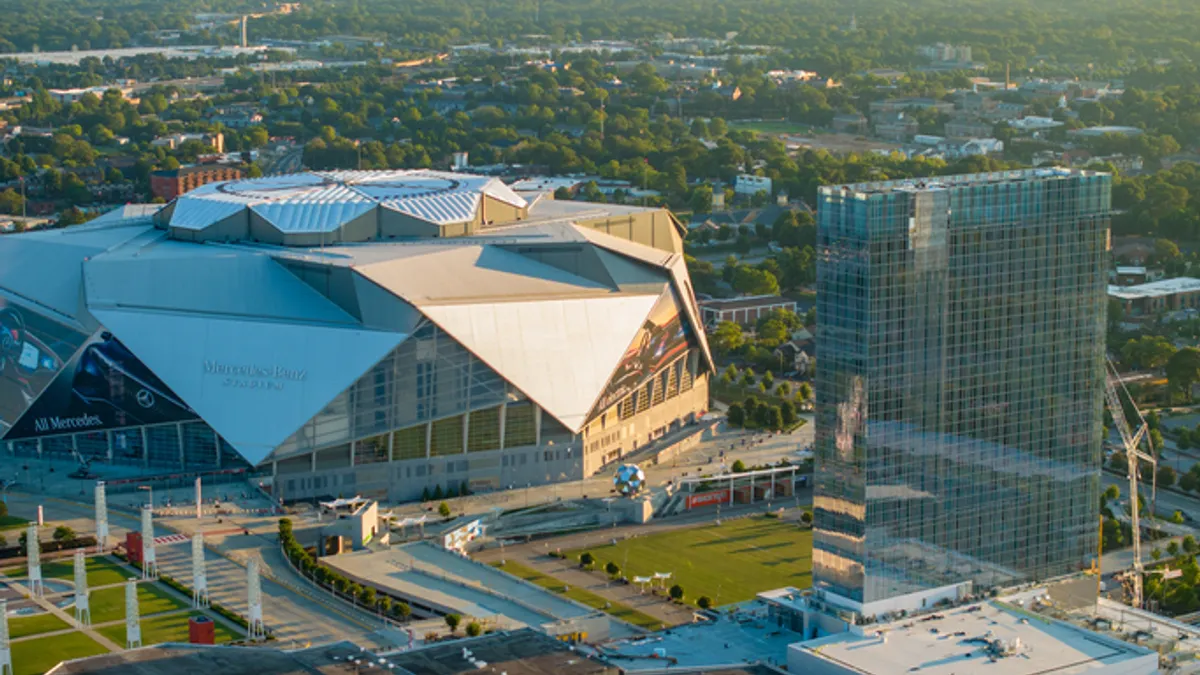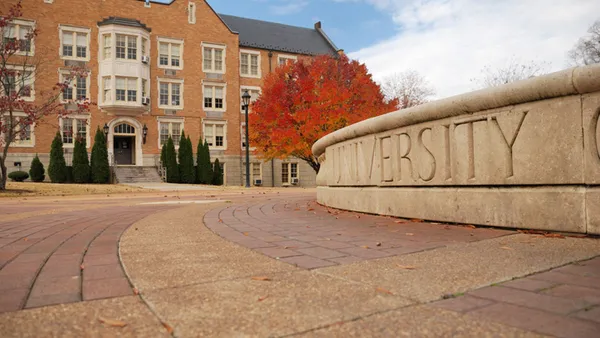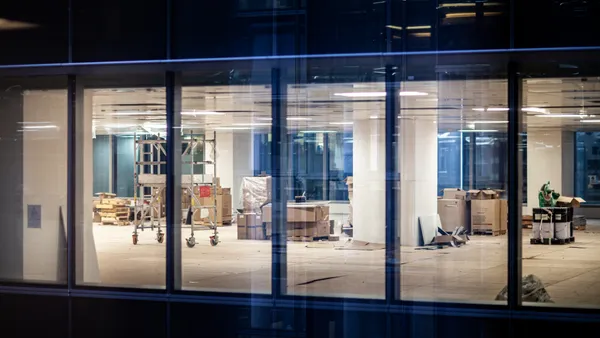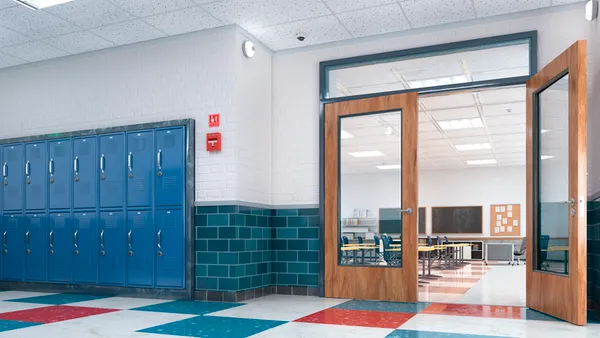Dive Brief:
- The pre-existing supply and demand imbalance in the U.S. life sciences market has intensified in most major lab markets, driven by lukewarm demand and robust subleasing, according to JLL’s 2024 Life Sciences Real Estate Perspective and Cluster Analysis report released Thursday.
- Despite a 50% reduction in the pipeline of new lab spaces from the year before, key occupancy metrics have worsened. Over three million square feet of sublease space has become available for sublease, driving the overall national lab availability rate to 30%, while rents have fallen nearly 9%, returning to levels seen “at the start of the downturn in Q1 2022,” per the report.
- As large biopharma companies work to reassess their space needs and optimize their real estate portfolios across the U.S., tenants are also spending more time looking for space and taking less space when they do sign leases, JLL says.
Dive Insight:
After leasing more than 3 million square feet in 2022, “the top 30 or so pharma companies only did one-fourth of that in 2023, their lowest volume of leasing in a decade,” JLL says. Of the 30 large pharma real estate moves the firm tracked in the first half of 2024, 67% resulted in a reduction of space and only 20% expanded their footprints, according to the report.
At the halfway point of 2024, total U.S. lab inventory reached 171.6 million square feet, growing by about 20.5 million square feet year over year. Occupied lab space stayed mostly steady at 130.8 million square feet, while leasing dropped 9.1% year over year to 4.13 million square feet in the first half of 2024, per the report.
A potential headwind for real estate demand is the elevated level of acquisitions, which could signal resizing and shuttering of locations. However, after five years of data, JLL found that 72% of acquired startups in the big three markets — Boston, San Diego and the Bay Area — retained or grew their footprint, with only one-quarter of acquisitions resulting in a net reduction in immediate space needs in the year following deals, the firm says.
These areas have still seen significant year-over-year vacancy increases, however, with the Bay Area’s vacancy rate up 550 basis points to 24.8%, Boston’s up 540 basis points to 15.9%, and San Diego’s up 310 basis points to 19.1%, according to a separate September life sciences office market report from CommercialEdge. These compare to the national vacancy rate of 19.4, which was up 200 basis points year over year, the CommercialEdge report says.
Meanwhile, asking rents are expected to erode further next year, as landlords with large availability in oversupplied submarkets increasingly compete on price to get deals signed, JLL said in its report. This is a short-term dynamic, however, with many leaders predicting an increase in headcount, footprint and number of locations by the end of the decade, according to a JLL survey of global pharma decision-makers.
The current cycle will end in the next six to 12 months, followed by “an extended period characterized by limited new supply and potential repurposing of struggling life science assets,” which will help the market recover, according to the firm’s projections.
The return to market equilibrium will vary widely by geography, market and submarket, however, the report notes. “Amid tepid demand, a flight to asset quality is already well underway” and landlords with scale and sector experience are expected to find ways to get deals done, JLL says.
In the past 18 months, landlords “with scale and experience” have completed 72% of leases across the three major markets — Boston, San Diego and the Bay area — yet hold only 42% of the available space. Those lacking scale or experience have completed only one-fifth of leasing volume, JLL says.
Some well-established markets with pockets of resiliency, such as Torrey Pines and UTC in San Diego or Kendall Square in Boston, did not take part in the supply excesses seen from 2020 to 2022 and will face a shorter road to equilibrium, while nascent submarkets that lack a historical tenant base will have an uphill climb, JLL says.
The short-term picture may appear challenging, but there are signs of long-term growth, with the need for leasable lab infrastructure rising 74% over the past 13 years, per JLL’s research. Despite a slew of layoffs, consolidations and a difficult funding environment, sector employment rose 2% last year, with 3,000 more companies than a year prior, according to the report.
As a result, “the outlook remains solid,” JLL says, noting that 2023 was a “banner year” for approvals from the U.S. Food and Drug Administration. Furthermore, the largest 20 or so life sciences venture firms raised $2.4 billion every four months since January 2023, equal to the amount raised over the entire previous decade. That feeds into JLL’s expectations of “material growth in deployment that should result in additional demand for space that will help kickstart this recovery in earnest,” once macroeconomic indicators become favorable.
“For the recovery in demand to truly begin, the first domino to fall will be a reduction in interest rates,” JLL says. “We stand on the precipice of a lower rate environment than the one we’ve lived in in the past 30 months. The correlation between a healthier XBI (sector ETF) and real estate leasing deals across the U.S. is startling — a near one-to-one relationship between public valuations and deal volume in the past 15 years.”



